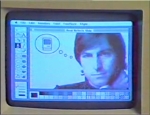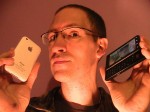Laser Lipo powered by LaserLipoTalk.com
January 21, 2014
January 6, 2014
<!– www.laserlipotalk.com script begins here –>
<p style=”font-family:Arial, Geneva, sans-serif; font-size:11px; margin-bottom:0px; display:block; text-align:center; color:#ccc; width:240px;”>
<a href=”http://www.laserlipotalk.com” title=”Laser Lipo” style=” color:#428BCA; text-decoration:none;”>Laser Lipo</a> powered by LaserLipoTalk.com </p>
<iframe frameborder=”0″ width=”250″ height=”530″ src=”http://achint.me/bmi/index.php?client_id=EBNRPTBC6K&width=240″></iframe>
<!– www.laserlipotalk.com script ends here –>
November 20, 2009
Coming War Between the Android Army and iPhone
By Chris Janota from MX123.com 11/22/09
 Until just a couple months ago i considered myself just another consumer searching for the best smart phone out there. I went on a little consumer journey (read more) that carried me from owning the Palm Pre to the iPhone and finally ending up with the Motorola Droid and now finding myself embarked in the beginning stages of mobile application development for my company. Along the way couldn’t help but notice some parallels of transitioning away from IBM mainframes and mini computers to PCs and Macs in the 1980s.
Until just a couple months ago i considered myself just another consumer searching for the best smart phone out there. I went on a little consumer journey (read more) that carried me from owning the Palm Pre to the iPhone and finally ending up with the Motorola Droid and now finding myself embarked in the beginning stages of mobile application development for my company. Along the way couldn’t help but notice some parallels of transitioning away from IBM mainframes and mini computers to PCs and Macs in the 1980s.
Now, as then, a smaller device is displacing a bigger one. Now, as then, the platform remains somewhat primitive but is evolving rapidly. Hardware makers are trying to figure out which user interface works best. Software makers are dreaming up new ways to use machines that even their creators could not have imagined. Now, as then, a new ecosystem is arising, with disruptive technology creating new powerhouses and threatening the survival of market leaders.
Back in 1984, Apple leapt way ahead in the PC market when it released the original Macintosh, the first popular computer to employ a graphical user interface. It took Microsoft six years to come up with something that could compare to the Mac, in the form of Windows 3.0. Six years! For all that time, Apple had the market to itself. Nevertheless, Windows took over the world and now holds more than 90 percent market share, while Apple squeaks by with less than 5 percent worldwide.
Its unfolding again before our eyes like the sequel of the movie Pirates of Silicon Valley. In June 2007, Apple introduced the iPhone, a device that was so far  beyond everything else in the market that even now, two and a half years later, nothing can beat it. To be sure, Nokia and Research in Motion still hold a greater share of the smartphone market than Apple does, but their aging software platforms look obsolete next to Apple’s.
beyond everything else in the market that even now, two and a half years later, nothing can beat it. To be sure, Nokia and Research in Motion still hold a greater share of the smartphone market than Apple does, but their aging software platforms look obsolete next to Apple’s.
The question is, will Apple do with the iPhone what it did with the Mac? Will it leap out to a technological lead and then find a way to clutch defeat from the jaws of victory? Or has Apple learned from its previous experience and figured out a way to turn its superior design and wonderful technology into market domination?
Probably Apple’s biggest blunder with the Mac was refusing to let other companies license its software. (There was a time when Apple did license its software, but by then it had already lost out to Microsoft.) The thing is, Apple CEO Steve Jobs is a control freak who believes in keeping the software tightly coupled to the hardware. In his mind, this is the only way to guarantee that you’ll give customers a terrific experience.
Microsoft took the opposite approach, letting any PC maker license the Windows operating system. There’s a tradeoff here. Microsoft couldn’t control the user’s experience. But its decision led to greater diversity of machines, and lower prices. For most of the world, cheap machines that were “good enough” trumped Apple’s pricier, perfectionist, control-freak approach.
Microsoft also encouraged developers of software applications to create programs for Windows, and gave them a huge audience they could sell to. The more apps the software guys created, the more appealing Windows became, so it was a self-reinforcing phenomenon, a virtuous circle.
With Apple and the iPhone, in some ways it’s 1984 all over again. Just as with the Mac, Apple keeps the iPhone’s hardware and software tightly coupled. Meanwhile, other companies are taking the old Microsoft approach, most notably Google, which has developed a smartphone operating system called Android that any phonemaker can use at no cost and customize any way they like. Android can do things that the iPhone can’t, like run multiple applications at the same time.
 Again, as with Windows PCs, with Android we’re going to see a tradeoff: more diversity, lower prices (eventually), but perhaps a less predictable experience. No two Android–based devices will be completely alike. Also, it’s still in the early days for Android, so your experience might be rockier than on the iPhone. One new device that has lots of geeks buzzing is the Droid, from Motorola, which just started shipping this month. The Droid has a touchscreen, like the iPhone, but it also has a real keyboard. And the Droid runs on the Verizon network, while the iPhone runs on the AT&T network, which isn’t as good. And the Droid costs the same as the iPhone.
Again, as with Windows PCs, with Android we’re going to see a tradeoff: more diversity, lower prices (eventually), but perhaps a less predictable experience. No two Android–based devices will be completely alike. Also, it’s still in the early days for Android, so your experience might be rockier than on the iPhone. One new device that has lots of geeks buzzing is the Droid, from Motorola, which just started shipping this month. The Droid has a touchscreen, like the iPhone, but it also has a real keyboard. And the Droid runs on the Verizon network, while the iPhone runs on the AT&T network, which isn’t as good. And the Droid costs the same as the iPhone.
But here’s where Apple has learned something from Microsoft, namely the power of having a huge ecosystem of software developers making programs for your platform. Apple has wisely encouraged people to create applications, or “apps,” for the iPhone. There are now 100,000 apps available for the iPhone, 10 times more than for Android. So even if you think that the Droid is better than the iPhone, if you go for the Droid, you’re giving up that wonderful ecosystem of iPhone apps.
But over time, a lot of iPhone apps will become available on Android, too. So Apple’s advantage will diminish. Market research company Gartner predicts that by 2012, Android will have slightly more market share than the iPhone, thanks to a tidal wave of Android-based devices that are expected to flood the market over the next few years. Rumor has it that Apple will expand its presence in the mobile-device market by introducing a tablet computer next year. But by going it alone, Apple will never keep up with the Android army.
To avoid a slipping market share it maybe that Apple will come to agree to an arrangement with Google to allow some of the key Android features on the iPhone. Unlike the personal computer days, Google’s revenue comes almost entirely from ads. It’s beneficial to Google at least to allow features on the iPhone Operating System to expand the reach of Google’s network. At least then a truce can be drawn between Apple and the little green men.
Chris Janota is the CEO of MX123.com a stubbornly successful independent DVD retailer in St. Paul, Minnesota that buys used DVDs, CDs, videogames and books from the public.
Smart Phone Manufacturer, Provider, OS matrix
By Chris Janota of mx123.com 11/20/2009
Confused by all the Names? Is Android a Phone? Does the Palm Pre support iTunes?
This chart makes sence of it all:
| Manufacturer | Phone Name | Carriers | Operating Systems (OS) | Application Marketplace |
| Apple | Iphone | At&T | Iphone | iTunes |
| Motorola | Droid | Verizon | Android 2.0 | Android Market |
| HTC | Droid Eris | Verizon | Android 2.0 | Android Market |
| HTC | Touch Pro2 | T- Mobile | Android 2.0 | Android Market |
| Palm | Pre | Sprint/Nextel | Palm | Palm |
| HTC | My Touch | T-Mobile | T-Mobile | T-Mobile |
| – | – | – | Window Mobile | – |
| Nokia | – | – | Symbian | – |
See my review on the leading Smart phones.
Palm Pre vs. iPhone vs. Android
 Choosing the Best Smartphone
Choosing the Best Smartphone
By Chris Janota from MX123.com 11/20/09
In my quest to design a mobile application my first step has been to thoroughly research the best Smartphones. Here’s a review of the best. Since i was locked into a contract with Sprint my natural first choice was to explore the options available with them. Presenting the Palm Pre. At the time the importance of applications “apps” on my smart phone had not sunk in – probably no differently than most people’s thought of having a computer in their home back in 1980. But then I experienced a rush of creativity and enthusiasm playing around with the few applications Sprint offers. Access to iTunes was important to me since i want to double my phone as an MP3 player to listen to my music and my Podcast library. The sales clerk at Sprint explained to me i could access iTunes. But after happily using my Pre for a couple weeks my access to iTunes mysteriously ceased after downloading an iTune update. I learned Sprints stock drop from $17 to $11 per share during this week and I was off to Sprint to return my phone and my contract with Sprint.
| Key Features | Andoid | iPhone | Palm Pre |
| QWERTY Keyboard | Y | N | Y |
| Runs multiple applications | Y | N | Y |
| # Apps | 10,000 | 100,000 | 100 |
| Google Navigation | Y | N | N |
| Google voice recognition | Y | N | N |
| iTunes connection | N | Y | N |
| Design | Ugly- but rugged | Sexy | okay |
For another chart that compares phone manufacturers, operating systems, carriers and more click here.
Since the iPhone boasted having 100,000 apps (heck, 100 would be all I ever needed) I went to AT+T to pick up an iPhone. What a great design! I had a blast listening to my iTunes again and using Facebook, Pandora, email, many apps specific to my industry. Why would anyone think of leaving such a perfect piece of technology…or art? But as i was now exploring developing my own navigational app for my company mx123.com, along came the revelation of Google’s Android operating system and where this new market is headed. Because Apple manages the manufacturing, operating system and the application market it now finds itself competing with Google. Google has designed Android an OS that any phone maker can use on their phone at no cost. It’s a deja vu experience going back to 1984 at the outset of the PC -Apple Computer war. (See my article on the Coming War Between the Android Army and iPhone.)
I returned the iPhone and picked myself up a Motorola Droid which runs the Android 2.0 OS. Unlike the iPhone it has a real QWERTY keyboard and runs multiple applications. But the new Google Navigation is the real gem. It has turn-by-turn navigational system like TomTom or Garmin except that Android offers net connectivity that could give you updated traffic reports and nearby business destinations. Now combine that functionality with Google search and Google’s new voice recognition into your navigation. Much the same way the original internet was made for shopping… or porn, it seems to me its seems all mobile, GPS, voice recognition technologies are coming together at the same time to make a killer navigational app. :-0 To see this in action checkout this Google video. In real life it really does work about as well as you see in the video.
Chris Janota is the CEO of MX123.com a stubbornly successful independent DVD retailer in Woodbury, Minnesota that buys used DVDs, CDs, videogames and books from the public.
November 18, 2009
About me
 I’m Chris Janota. Im the CEO of MX123.com, the modern revitalization of Media Exchange 123 a once stubbornly successful independent DVD retailer in Woodbury, Minnesota. In 2007 we closed our brick and mortar retail operations and now concentrate solely on our online business: buying used DVDs, CDs, videogames and books from the public through our website. We were created to provide consumers a way to sell their unwanted media directly online. We are a practical alternative to Ebay, Craigslist, Amazon and other online marketplaces for those you want to save precious time. To see me in action check one of my WEIRD videos out on youtube.
I’m Chris Janota. Im the CEO of MX123.com, the modern revitalization of Media Exchange 123 a once stubbornly successful independent DVD retailer in Woodbury, Minnesota. In 2007 we closed our brick and mortar retail operations and now concentrate solely on our online business: buying used DVDs, CDs, videogames and books from the public through our website. We were created to provide consumers a way to sell their unwanted media directly online. We are a practical alternative to Ebay, Craigslist, Amazon and other online marketplaces for those you want to save precious time. To see me in action check one of my WEIRD videos out on youtube.
A significant part of our business involves purchasing items from other media reseller entrepreneurs. They are the Ebay Powersellers, Amazon Marketplace merchants, garage salers, flea marketers and pawn shop owners. And they are a glimmer of hope in the retail economy. This garage sale economy, you see, is chugging along nicely. Ever since the downturn of the economy, listings of used-item sales on sites such as Craigslist and Facebook Marketplace have tripled in the last two years.
MX123 will be expanding its mission statement to encompass mobile technology tools to aid resellers in the garage sale economy. Because used merchandise is ambulatory, pricing data needs to be mobile. Locating sales and locating pricing data with extreme speed and accuracy is essential to a productive garage sale entrepreneur. And we are aiming to help.